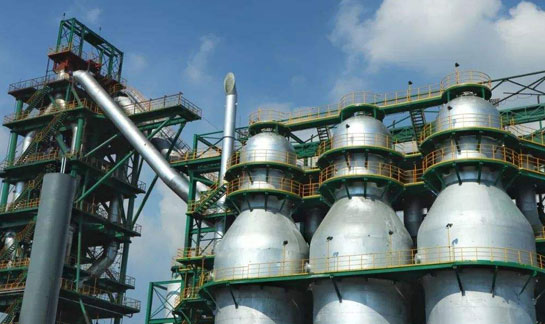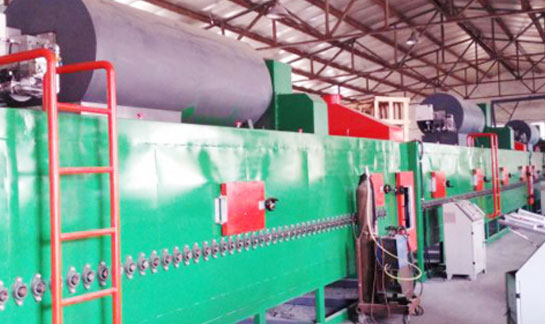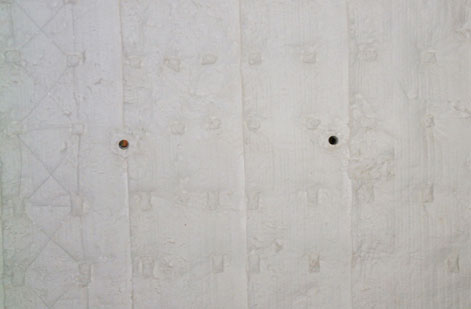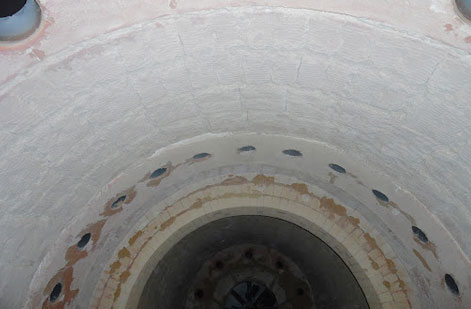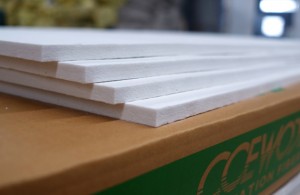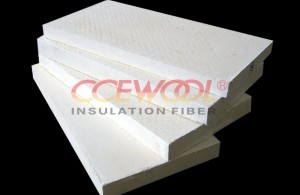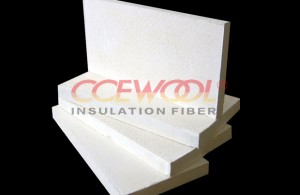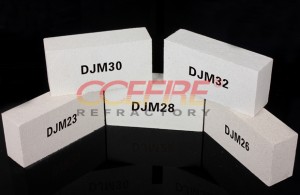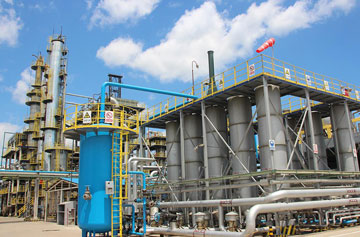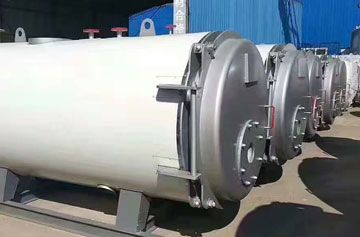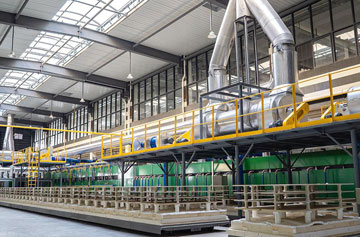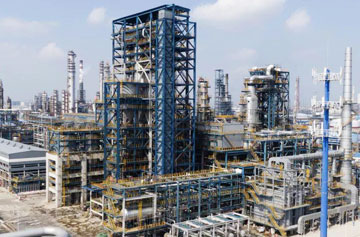Design and Transformation of insulation layer fiber of Ironmaking Blast Furnaces and Hot-blast furnaces
Introduction to the original insulation structure of blast furnaces and hot-blast furnaces:
The blast furnace is a kind of thermal equipment with a complicated structure. It is the main equipment for ironmaking and has the advantages of large output, high productivity, and low costs.
Since the working temperature of each part of the blast furnace is very high, and each part is subjected to mechanical effects, such as the friction and impact of the falling charge, most of the hot-surface refractories use CCEFIRE high temperature light bricks that come with high softening temperatures under load and good high-temp mechanical strengths.
As one of the main ancillary equipment of the blast furnace, the hot blast furnace provides high-temp hot blast to the blast furnace by using the heat from the blast furnace gas combustion and the heat exchange effects of the brick lattice. Since each part bears the high-temp reactions of gas combustion, the erosion of dust brought by the gas, and the scouring of combustion gas, the hot surface refractories usually choose CCEFIRE light insulation bricks, heat-resistant concrete, clay bricks, and other materials with good mechanical strengths.
In order to fully ensure the thermal insulation effects of the furnace lining, abiding by the principles of choosing technically reliable, economical and reasonable materials, the lining of the working hot surface of the blast furnace and its hot blast furnace usually selects insulation materials that have low thermal conductivity and good insulation performances.
The more traditional method is to select calcium silicate board products, which have this specific thermal insulation structure: the high-aluminum light bricks + silica-calcium boards structure with a thermal insulation thickness of about 1000mm.
This thermal insulation structure has the following defects in application:
A. The thermal insulation materials have large thermal conductivity and poor thermal insulation effects.
B. The silicon-calcium boards used in the back lining layer can break easily, form holes after being broken, and cause heat loss.
C. Large heat storage loss, resulting in energy waste.
D. The calcium silicate boards have strong water absorption, are easy to break, and perform poorly in construction.
E. The application temperature of calcium silicate boards is low at 600℃
The thermal insulation materials used in the blast furnace and its hot blast furnace need to have good thermal insulation performance. Although the thermal conductivity of the calcium silicate boards is lower than that of refractory bricks and the thermal insulation performance has been improved, due to the large furnace body height and large furnace diameters, calcium silicate boards break very easily during the construction process due to their brittleness, resulting in incomplete back lining insulation and unsatisfactory insulation effects. Therefore, in order to further improve the thermal insulation effects of the metallurgical blast furnaces and hot blast furnaces, CCEWOOL ceramic fiber products (bricks/boards) have become the ideal material for the insulation on them.
Analysis of ceramic fiberboards' technical performances:
CCEWOOL ceramic fiberboards adopt high-quality AL2O3+SiO2=97-99% fibers as raw materials, combined with inorganic binders as the main body and high-temp fillers and additives. They are formed by stirring and pulping and vacuum suction filtration. After the products are dried, they are processed through a series of machining equipment to complete the processing procedures, such as cutting, grinding, and drilling to ensure that the product performance and dimensional accuracy are at the international leading level. Their main technical features include:
a. High chemical purity: containing 97-99% high-temperature oxides such as Al2O3 and SiO2, which ensures the heat resistance of the products. CCEWOOL ceramic fiberboards can not only replace calcium silicate boards as furnace wall lining, but also be used directly on the hot surface of the furnace walls to equip them with excellent wind erosion resistance.
b. Low thermal conductivity and good thermal insulation effects: Because this product is a CCEWOOL ceramic fiber product produced by a special continuous production process, it has a better performance than traditional diatomaceous earth bricks, calcium silicate boards and other composite silicate backing materials in its low thermal conductivity, better heat preservation effects, and significant energy saving effects.
c. High strength and easy to use: The products have high compressive and flexural strengths and are non-brittle materials, so they fully meet the requirements of hard back lining materials. They can be used in any insulation projects with high strength requirements, in replace of back lining materials of blankets or felts. Meanwhile, the processed CCEWOOL ceramic fiberboards have accurate geometric dimensions and can be cut and processed at will. The construction is very convenient, which solves the problems of brittleness, fragility and high construction damage rate of calcium silicate boards. They greatly shorten the construction period and reduce construction costs.
In summary, the CCEWOOL ceramic fiberboards produced by vacuum forming not only have excellent mechanical properties and precise geometric dimensions, but also maintains the excellent characteristics of fibrous heat insulation materials. They can replace calcium silicate boards and be applied to insulation fields that require toughness and self-supportiveness and fire resistance.
The application structure of ceramic fiberboards in ironmaking blast furnaces and hot blast furnaces
The application structure of CCEWOOL ceramic fiberboards in ironmaking blast furnaces is mainly used as the backing of silicon carbide refractory bricks, high-quality clay bricks or high-alumina refractory bricks, substituting for calcium silicate boards (or diatomaceous earth brick).
Application on ironmaking blast furnaces and hot blast furnaces
CCEWOOL ceramic fiberboards can replace the structure of calcium silicate boards (or diatomaceous earth brick), and because of their advantages, such as low thermal conductivity, high temperature in use, excellent machining performance, and no water absorption, they effectively solve the problems that the original structure has, for example, poor thermal insulation effects, large heat loss, high damage rate of calcium silicate boards, poor construction performance, and short service life of the insulation lining. They have achieved very good application effects.
Post time: May-10-2021


